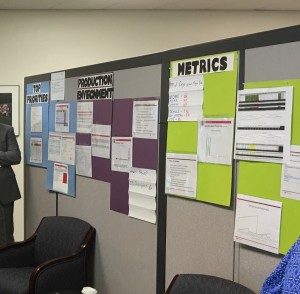Picture this. One of your IT leaders tells you they have been pulled into a project by a senior executive; they are trying to figure out who in IT owns it. You tell them that another of your leaders owns it. They are working out the specific issues with yet another leader. The first person says it’s still not clear. So you pull all three of them together for 15 minutes and try to sort it out.
working out the specific issues with yet another leader. The first person says it’s still not clear. So you pull all three of them together for 15 minutes and try to sort it out.
With a collaborative team that works well together, that 15 minutes is relatively easy. Your first question is who’s on first? You want to know who owns it and what’s going on.
My team has learned that one of my questions about problems is “who wakes up in the morning worried about it?” Not that I want people worrying and losing sleep. But, it’s a way to identify who owns something and is accountable for it. “Who’s on first?” is another one of those questions. It may be a messy, complex project. It may be off to the side or on the fringe but it still needs a clear owner.
After just 15 minutes, my three leaders and I confirmed the right roles for each of them, and next steps. And of course we talked about lessons learned. So what did we learn again in this situation?
Role clarification – this is critical for all projects, small or large, high priority or not. Clarifying and communicating sponsor, business owner, project manager, and decision makers is key.
Communication – proactive communication throughout the life of a project to all members of the core team and the stakeholders is another key.
Setting and managing expectations – this is especially true when dealing with many concurrent efforts with the same set of users and stakeholders. It’s also important when a project that seems simple actually has a lot of complex issues: technical, operational, legal or something else.
I’ll bet you can think of a messy project in your experience that swirled or stalled. You might have some bad memories. Most likely, what went wrong ties back to one of these basics. So clarify roles, communicate, and manage expectations, but make sure you know who’s on first.
 value. We are no exception.
value. We are no exception.








